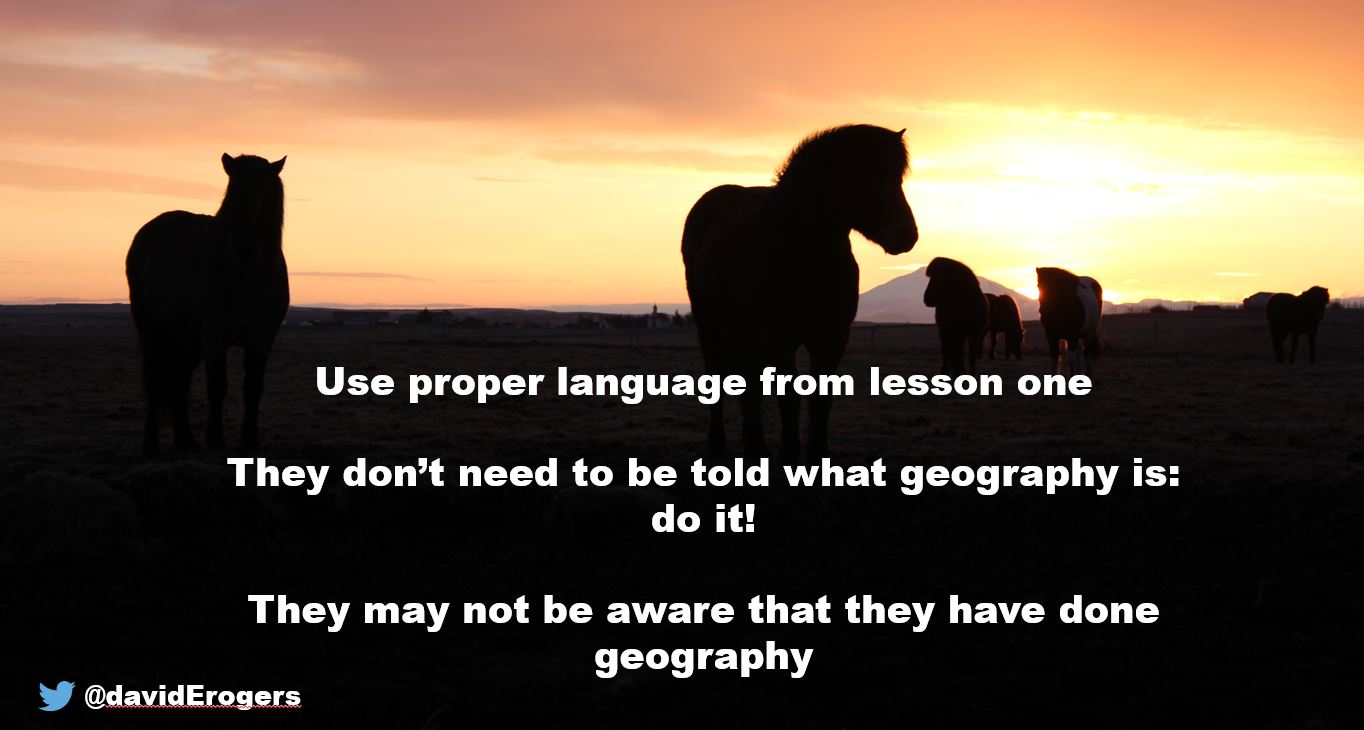I've had better times. As I make and near some important decision making I'm taking some time to reflect about what the last two years and two terms in senior leadership has taught me. The first was the subject of a workshop given during the recent Geographical Association Conference in Manchester and involves primary and secondary classrooms. The slides can be viewed above, and what follows is a brief overview of the context, my thinking and some practical examples.
As a leader (heavily involved in Pupil Premium students within a mainstream secondary school that serves a wonderful yet very diverse local community) I have come to believe, amongst other things, the following:
- Schools should be operating at a 0-18 age scale and follow and support their alumni through to their first job. Transition isn't good enough and too many students fall by the wayside. The important thing is the education and learning of young people in a community, not who has the hardest job.
- The most important phase of education for developing lifelong habits is primary.
- It's about high quality teaching every single day, in every single year group that is vital. In the wide majority of cases, it's not about bolt on intervention but getting the mundane right and making it memorable.
- Teachers are the agents of change, in particular middle leaders have the pivotal role.
- Leadership is fundamentally different at different scales of operation, from personal to institutional, but values are the same.
Anyhow, the workshop was targeted at Secondary teachers and, although I use geography as the lens, my thinking relates to whole school practices. The key points were:
There are many actions that the Government have taken recently that are simple pants, but one of the things they have right is that the purpose of geography is the same across Key Stages 1 to 3. Despite this, there is still a mistrust of each other. This has to stop. I'll admit that my own experiences are based on the limitations of working in five different secondary school, within each of which we have developed cross-phase teaching opportunities. To me, school space and staffing structures need to change so that we work across the entire school age group. That's not to say that we will teach all years, as there are specialist skills and knowledge that are required at each, but that it should be a powerful habit that we work together. School leadership in particular should be involved across the piste.
The workshop went on to share three specific example of working cross phase and my thanks goes to Leah Sharp whose idea it basically all was:
1. Using social media
This is where a Year 6 class teamed up with a Year 10 class. The year 6 provided a range of starter / revision activities that were completed by the Year 10s. The topic was rivers and it made clear that younger students can handle geographical vocabulary. Indeed, the project hammered home that expectations in secondary are often too low. In return, my Year 10 class created and shared a range of resources based around a case study of flooding which the Year 6 class used to create presentations.
2. Getting Year 6 and Year 8 to provide feedback
Here the Year 6 created an island full of settlements that were about to be destroyed by various natural hazards. The Year 8 group provided GCSE level case study material on a range of events which were used by the Year 6 class. The work of each group was shared with the other for marking and feedback. The discussions generated at both ends was an eye opener.
3. Joint Inset days
This year we devoted an entire INSET day to working with our primary schools. We focused on a range of workshops, learning walks and other activities to share work. What became clear is that Year 7 lack challenge and new material when they arrive at secondary school. Imagine what we could achieve if every lesson was challenging right from their first lesson in a secondary school. The day also included time for primary subject coordinators to meet with their secondary counterparts. The consequent sharing of information was very useful
What could happen in the future?
As mentioned, I think that they way forward must involve some cross phase work that is formalised through widening the remit of what is expected.


Comments
Post a Comment